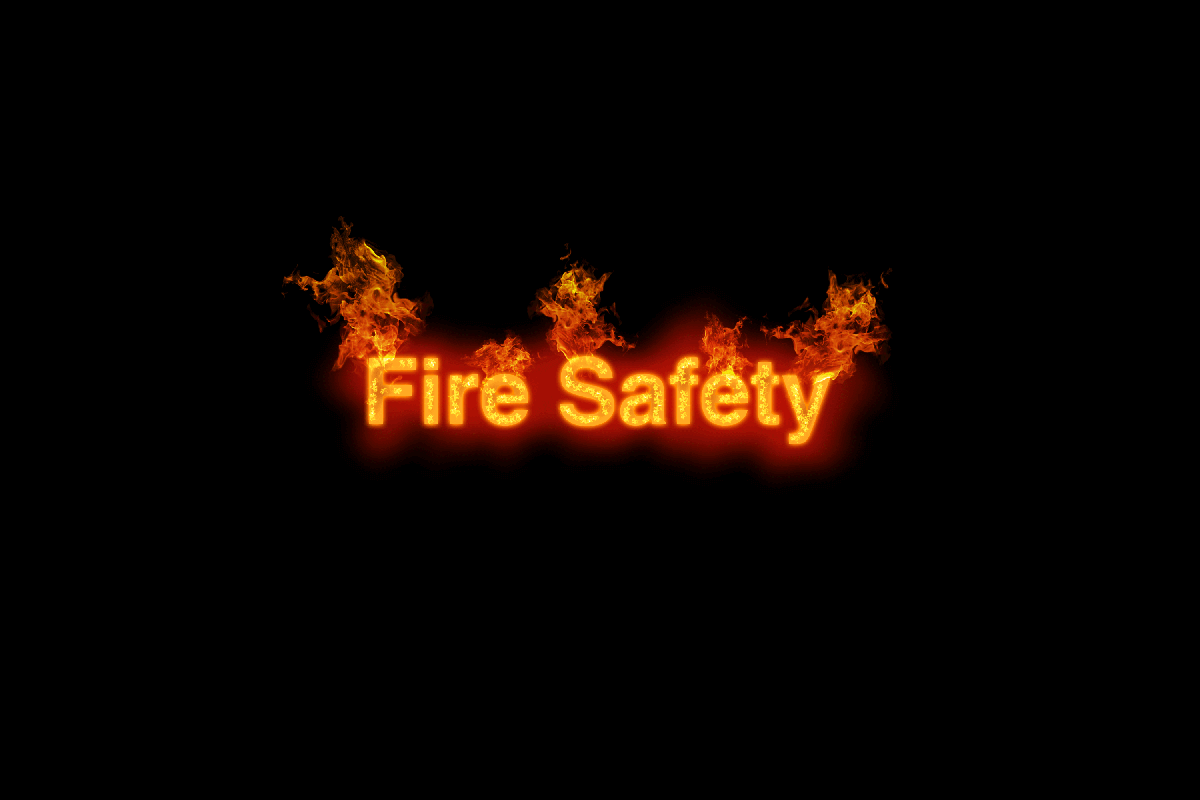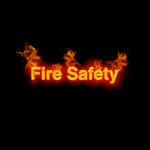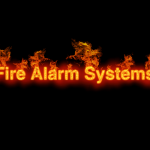In the event of a fire, everybody’s fast and safe evacuation on the premises should take precedence. Smoke and fire disseminate fast, and can see people get trapped in dangerous and inescapable areas if there’s no evacuation strategy in place.
As a landlord, manager, business owner, employer, or homeowner, you should ensure that nobody on your premises should ever have to undergo such a terrifying experience.
You can guarantee that outcome by preparing a tested evacuation strategy. In this way, you’ll have fulfilled your duty of care as the ‘responsible person’.
As the responsible person, you should have measures in place should a fire emergency ever occur – an evacuation strategy. When drafting a plan, you should take into account a range of factors in relation to your place of work and the personnel working within it, and one of the first actions of achieving this is conducting a fire risk assessment.
Doing so will entail monitoring your workplace, spotting the risks, establishing who might be in danger, executing new safety protocols in light of your discoveries, and revising/updating it regularly. Once your premises have been evaluated in this manner, you can start thinking about what you need to incorporate in your fire evacuation strategy plan.
Contents
What Is Total Evacuation?
Total evacuation entails moving all the occupants in the premises to a location of ultimate safety. This movement of occupants away from danger can either be simultaneous or phased.
Simultaneous Evacuation
 Simultaneous evacuation will be the evacuation plan that the majority of establishments will employ, especially small businesses, given how they’re not that big and have few storey floors. It will see everybody exit the building – in reaction to the alarm signal given when a fire erupts – in a calm and collected way.
Simultaneous evacuation will be the evacuation plan that the majority of establishments will employ, especially small businesses, given how they’re not that big and have few storey floors. It will see everybody exit the building – in reaction to the alarm signal given when a fire erupts – in a calm and collected way.
Phased Evacuation
Phased evacuation can be incorporated where there are fire-resisting materials included in the building’s architecture. In this strategy, the first individuals to move out of the building are those with impaired capability and those in close proximity to the fire, unless their PEEP mandates otherwise.
The remaining places are then cleared out in phases. The phase intervals can either be ‘vertical phased’ or ‘horizontal phased’ evacuation. In a building employing the phased strategy, avoid evacuating simultaneously to avoid the escape routes exceeding the capacity population of efficient movement.
What Is Progressive Evacuation?
Progressive evacuation involves first moving inhabitants to a relatively safe location within the premises where they can stay or, if needed, finish the evacuation procedure safely as per their personal emergency evacuation plan. Progressive evacuation is split into:
Progressive Horizontal Evacuation
Progressive horizontal evacuation entails moving people to an adjoining fire section on the same floor, from where they can clear out to a location of ultimate safety.
This evacuation strategy may be suitable for institutions such as care homes and hospitals, where fire-resistant rooms are available or locations where treatment can proceed until the fire has been put out.
You should note that horizontal evacuations are risky and take time, so extra fire precautions may be needed. This includes fore control areas, voice alarm systems, fire extinguishers, sprinklers distributed appropriately, or compartmentation of the building (using fire-resistant materials).
Zoned Evacuation
Zoned evacuation is accomplished by clearing out occupants from the affected area to a nearby controlled zone as the fire is being brought under control. At this juncture, you can do a headcount to see if everybody is present.
What is Two-staged Evacuation?
Certain instances where triggering an alarm for instant evacuation are not the right call, like in theatres and cinemas. This is because of the large number of people and the need for personnel/stewards to implement protocols set for the safe evacuation of people from the premises; overcrowding and panic will only mess up the whole evacuation process, which is dangerous for everybody.
In these cases, a ‘silent’ staff alarm system should be issued to employees, such that they only are aware of the imminent threat. The alert can prompt staff to start executing fire evacuation protocols and set the main alarm when everything is ready.
What Is Defend in Place?
 Certain situations may need the inhabitants inside the building to remain right where they are and allow the firefighters to put out the fire. This approach depends on firefighting measures undertaken to protect the delegated areas.
Certain situations may need the inhabitants inside the building to remain right where they are and allow the firefighters to put out the fire. This approach depends on firefighting measures undertaken to protect the delegated areas.
This strategy is perfect for healthcare facilities where occupants don’t have the ability to move. In most cases, the occupants in question may rely on life-supporting machinery and other essential equipment. The ‘defend in place’ approach of handling fires enables the hospital staff to keep patients where they are as they continue to receive treatment.
What is Stay Put?
In a ‘stay put’ approach, when there’s a single flat fire, the inhabitants of that flat will clear out, and all the remaining occupants in the flat will be safe only if they remain where they are
A ‘Stay Put’ policy approach entails the following:
- When a fire erupts in a flat, the inhabitants warn other occupants inhabiting the flat, get out of the premises calmly and call the fire brigade for immediate help.
- If a fire erupts in common areas of the building, anybody in that area should get out of the building and call the Fire and Rescue immediately.
- All other occupants not in immediate danger of the fire would preferably remain where they are unless otherwise instructed by the Fire and Rescue Service.
However, this doesn’t suggest that inhabitants not directly affected by the fire who want to get out of the building should be impeded. Nor does it stop those clearing out of a flat that’s on fire from warning their flat neighbours of the danger, allowing them also to evacuate if they don’t feel safe.
There isn’t any Building regulation in place that provides passive or active fire protection guidelines, which would enable another option to the Stay Put Strategy.
What’s the Best Fire Evacuation Strategy?
The question of what is the best fore evacuation strategy to employ in your premises is entirely contingent on the nature and size of your establishment and the occupants within it.
In general, there will be some facets of fire evacuation strategies that will apply to almost every establishment, like having fire marshals or wardens take charge of the situation. This is because having a calm and level-headed mind in that scenario is key to guaranteeing the safety of everyone in the building at the time.
One of the key responsibilities of the fire marshal or warden is surveying the escape routes; before they lead people in that direction, they must first ascertain the escape route is free of smoke and safe to pass through.
For instance, if the fire marshal or warden notices that the stairwell is hastily filling up with smoke or the doorknobs have become red-hot, they will know they have to look for another escape route that hasn’t become compromised.
What are the Dos and Don’ts of Fire Evacuation?
When a fire erupts in your premises or place of work while moving out of the building, there are certain things you should bear in mind if you and others are to reach your designated area safely for a headcount to ensure that nobody has been left behind.
Do
- If you are the first to identify fire, you must signal a warning by using the nearest fire alarm installation point.
- Make sure to secure any guests on the premises and ensure they have been escorted from the place of danger.
- Move out of the building and head to the designated assembly point.
- When you arrive at the allotted safe location of the building, stay put.
- Only get to the building when you’ve been given the go-ahead.
Don’t
- Get into the lift (unless it has specifically been chosen as a secure place of refuge or a viable escape route).
- Run during escape protocols since this will create panic and likely result in accidents as people frenzy to escape safety.
- Go back into the building to collect personal items.
- Try firefighting unless you are certified to do so. E.g. a fire marshal or warden.




